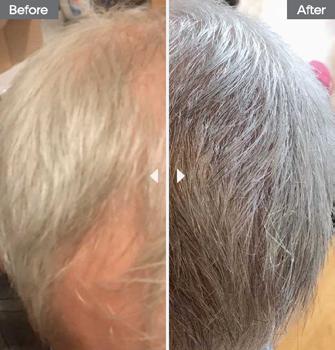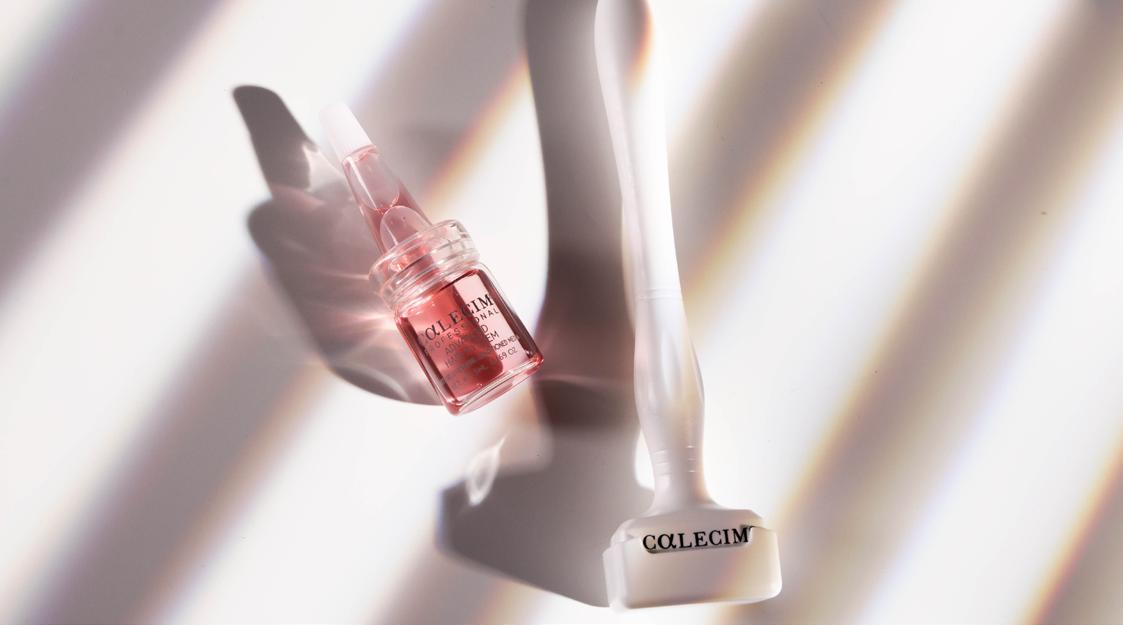
7 minute read
GOOD HAIR DAY
We chat with Dr Munir Somji about hair loss and his newly launched non-surgical solution – CALECIM® Resilient Hair Rehab with DNA testing.
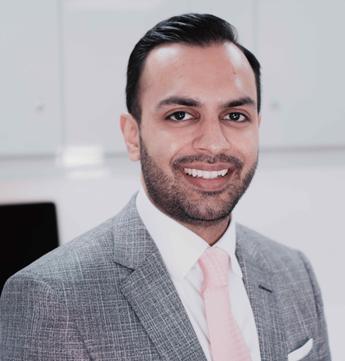
Androgenetic alopecia, also known as ‘male pattern hair loss’ or ‘female pattern hair loss’, is the most common type of hair loss, affecting approximately 50% of people over 50. As such, there is an ever-increasing demand for treatments that address it noninvasively and with little downtime.

Dr Munir Somji is the founder of DrMediSpa and is globally recognised amongst colleagues and industry experts as one of the leading doctors within the field of aesthetics with a specialist interest in hair. He believes the incidence of androgenetic alopecia is a lot higher than we think, especially among menopausal women.
“Androgenetic alopecia is highly prevalent. The incidence is much higher than we think, and there’s definitely been a trend of female hair loss.
“For women, as their oestrogen levels drop in the peri-menopausal period, and if they have a sensitivity to testosterone, they will start seeing an increase in the amount of hair loss they are getting. Female pattern hair loss is different from male in that you get this global thinning. Then, towards the menopausal process, you start getting this temporal recession, which mimics male pattern hair loss.
“With men, it was that traditional pattern, temporal recession and then crown recession. But I would postulate, in terms of feedback from patients at the clinic, that it’s probably more emotionally connected for women to lose hair than it is for men. Because unfortunately, in society, it’s socially acceptable for a man to lose some hair.
“That’s why we are seeing an exponential rise in female treatments, particularly non-surgical treatments. Because a lot of females might not be appropriate for surgery, too.”
The other increasing form of hair loss Dr Somji is seeing relates to scalp health, particularly in the post-pandemic world, where many people also suffered telogen effluvium as a result of COVID-19 and with other factors at play. “There are environmental behaviours within society, such as hair extensions and heat-based treatments, that can cause telogen effluvium or shock loss”, says Dr Somji. “Even some types of masks that block the scalp can cause profound hair loss, although it tends to be reversible. So scalp health is really important.”
The CALECIM® Resilient Hair Rehab treatment
Dr Somji regards CALECIM as his ‘stem cells on ice’. Following the success, he saw in his patients post hair transplant, in both results and reductions in procedure downtimes, he wanted to curate a treatment to revolutionise non-invasive hair procedures. Improving hair density and quality with transformational results for his patients. Enter, the CALECIM® Resilient Hair Rehab Treatment.
This future-facing treatment intelligently harnesses the power of dynamic stemcell signalling technology with DNA hair testing. The ground-breaking signalling ceiling occurs when stem cell extracts are successfully able to send ‘cellular messages’ to the hair follicle cells, stimulating growth and creating a healthier environment for thicker, glossier, and more resilient hair to grow.
The treatment has clinically validated results that show a 24% increase in the growth of hair follicle cells and a 30x reduction in inflammatory signals within the hair follicle (a leading contributor to hair cell follicle death). It has been clinically proven that stem cell-derived growth factors are able to re-invigorate dormant and sluggish hair follicles.

This is a particular advantage for female hair loss, where surgery isn’t always appropriate. Dr Somji explains, “Sometimes when you’ve got this global thinning pattern, what you get is ‘miniaturisation’ where the hair shock grows through in the hair cycle, thinner and thinner each time it grows through. If you’ve got a patient with a larger area of miniaturised follicles, it may be unsafe to transplant that area because the trauma of the surgery may damage those hairs.”
The CALECIM® Professional Advanced Hair System used in this treatment contains an extremely high yield of stem cell extract, of about 80% concentration, with 1ml of the active ingredient containing at least 3,000 growth factors and proteins.
CALECIM® is natural, effective, safe and clinically proven to use the potential of stem cells to transform hair loss concerns, with no reported side effects.
“ I am a fan of CALECIM® as it is a highly effective treatment for my patients that also has impressive peer-reviewed papers and clinical trials”, says Dr Somji. “The CALECIM® technology works better due to the stem cells used within the technology, as they are product stabilised in a laboratory, meaning they have the greatest efficacy for the longest period of time. The product contains growth factors, which can trigger the patient’s own stem cells within the hair follicle. The cellular messaging is taken from (red deer) umbilical stem cell extract, the lead ingredient in CALECIM®, which sends signals to their own stem cells to decrease anti-inflammatory cues and accelerate follicle cell growth. This allows me to truly offer transformative results for my clients, which can promote new hair growth and minimise scalp inflammation.”
Treatment snapshot
The patient must arrive with clean hair which has had no other product applied. During the in-clinic treatment, Dr Somji will perform a thorough scalp analysis to begin to assess the quality of the hair and hair follicles, allowing him to understand how to improve the quality of the patient’s hair and future-proof it.
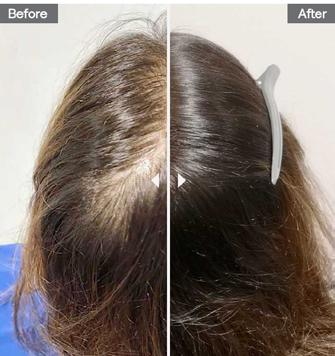
Dr Somji believes that there are a variety of reasons hair might feel dry, thin or unhappy, and most can be improved by looking into genetics, medication, stress, illness and lifestyle shock. After Dr Munir has been able to examine the condition of the hair and scalp, he will decide whether to do a hair DNA test to truly understand the quality of the hair and the genetic weaknesses which can be supported to create more resilient, healthy hair.
“Looking at DNA is really important now”, says Dr Somji. “It can tell us about the efficacy of minoxidil administration and whether that patient may need a higher strength. It can also tell us about their body’s response to certain growth factors. It will tell you how responsive they are to vasodilators. And will give us an indication of how severe the hair loss is so we can accurately predict how much people need to really maintain that.”
Once the analysis is complete, a professional-grade micro-needling device will be used to infuse the CALECIM® Professional Advanced Hair System serum into the area. This is then massaged in. At the end of the treatment, Dr Somji will send the patient for their hair DNA bloods, and will give them a prescription to use with their CALECIM® at-home.
“The aim with androgenetic alopecia patients is constructing a plan that has high compliance. And to get high compliance, we need a plan that is economical for the patient but can also be easily performed so that they actually stick to it”, he says.
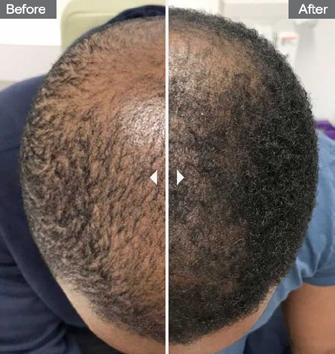
For best results, the procedure should be repeated two times a week for six weeks. Following treatment, hair follicles will be strengthened to support new hair growth and the scalp will be less inflamed.
